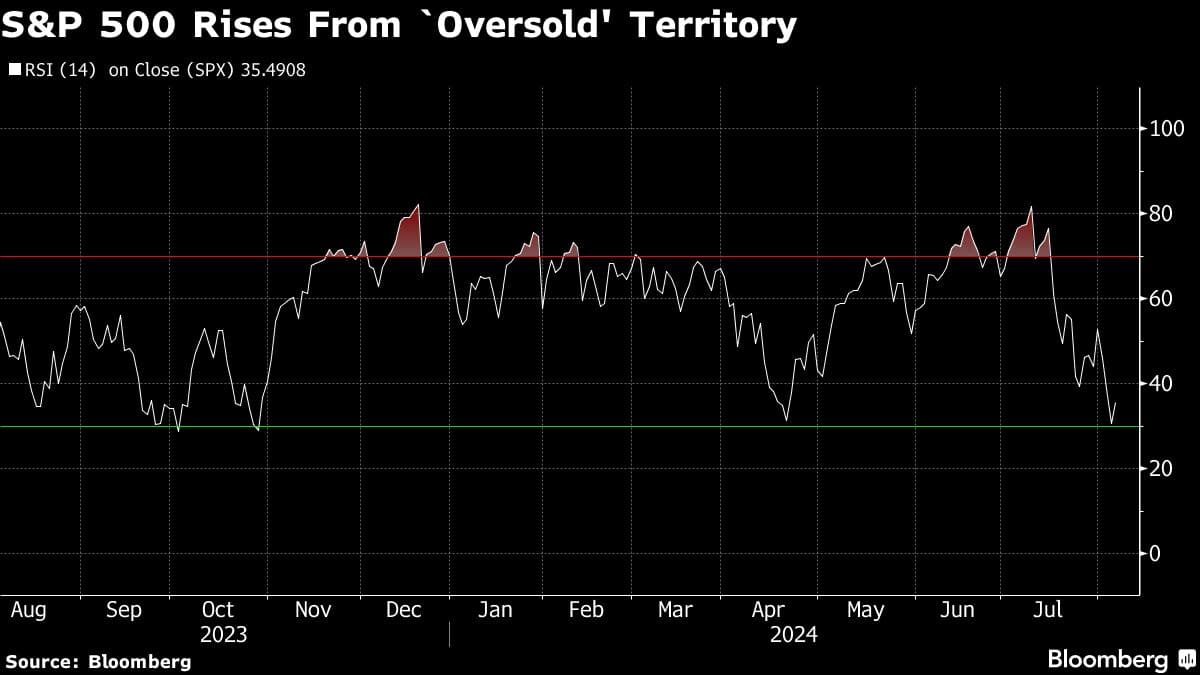



Asian stocks rallied after the Bank of Japan’s deputy governor said it won’t raise interest rates if markets are unstable, reassuring investors unnerved by a recent surge in the yen.
Japan’s two key stock gauges both rose after the yen fell by more than 2% against the dollar. Bank of Japan’s Deputy Governor Shinichi Uchida noted the recent volatility in Japanese markets, saying the BOJ’s rate path will shift if there’s an impact on the policy outlook. Stocks in Taiwan and South Korea extended gains, while a regional gauge rallied 1.7%.
Traders are weighing whether the recent global selloff is an overreaction to weak US economic data, with Goldman Sachs Group’s data showing that hedge funds took advantage of Monday’s rout to buy stocks. In Asia, the question is whether the worst of an unwinding of yen carry trades and leveraged positions in Japanese stocks is over.

“The critical element for Japanese, and as we’ve seen, global equities, is the strength of the yen, which is itself an expression of the US economic outlook,” said Kyle Rodda, a senior market analyst at Capital.Com. “For now, the USDJPY is waffling around 145. If it remains fairly non-volatile and perhaps grinds higher, it will support a Nikkei recovery and a return to normalcy.”
The S&P 500 and Nasdaq 100 rose on Tuesday — following a Japan-led rebound in Asia — with both climbing 1% after a global meltdown. Wall Street’s “fear gauge” — the VIX — saw its biggest plunge since 2010. Traders also moderated expectations of Federal Reserve rate cuts this year, with swaps predicting around 105 basis points of easing, versus as much as 150 basis points on Monday.

The yen carry trade unwinding among speculative investors was 50% to 60% done, Arindam Sandilya, co-head of global FX strategy, said on Bloomberg TV. Investors using the cheap currency to fund investments in higher-yielding assets were caught out when the yen surged 11% over the past month.
The Nikkei and the Topix indexes slid into a bear market on Monday after they dropped 20% from their July peaks. The Nikkei’s implied volatility touched its highest level since 2008 at the start of the week.
Treasury 10-year yields were up slightly after jumping 10 basis points to 3.89% Tuesday.
Elsewhere, the New Zealand dollar strengthened after the jobless rate rose less than expected. Oil fell after an industry report indicated a buildup in US inventories after five weeks of declines.
“We would characterize the recent market pullback as a textbook correction, after months of low volatility so far in 2024,” said Carol Schleif at BMO Family Office. “The lack of volatility before the past few weeks is unusual, and our current correction is actually quite normal, especially during August, which historically is a volatile time for markets given lighter trading volumes and the summer doldrums.”
A semblance of calm returned to markets on Tuesday, following a pullback fueled by weak economic data, underwhelming tech results, stretched positioning and poor seasonal trends. The wall of worry the market built up over the past few days drove the S&P 500 to the brink of a correction, with a drawdown of about 8.5% from the highs.
Discover the latest Business News, Sensex, and Nifty updates. Obtain Personal Finance insights, tax queries, and expert opinions on Moneycontrol or download the Moneycontrol App to stay updated!
Find the best of Al News in one place, specially curated for you every weekend.
Stay on top of the latest tech trends and biggest startup news.